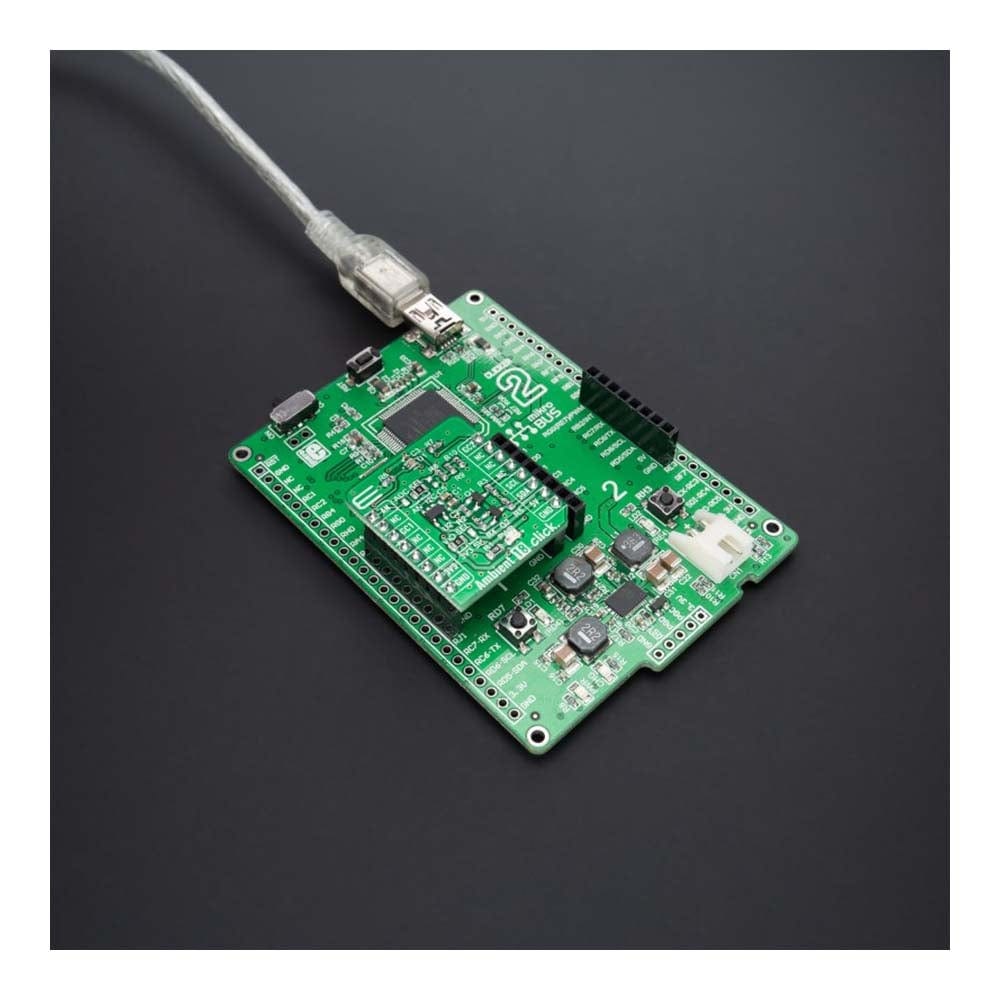






Overview
The Ambient 18 Click Board™ is a compact add-on board used to sense the amount of the present ambient light. This board features the BH1680FVC, an analogue current-output ambient light sensor from Rohm Semiconductor. The BH1680FVC can detect a wide range of illuminance up to 10klx and provides excellent responsivity close to the human eyes' response. Besides, it is also characterized by low sensitivity variation across various light sources, a built-in shutdown function, and the ability to process the output signal in analogue or digital form. This Click board™ is the most suitable for obtaining ambient light data for adjusting brightness in applications that require power saving and better visibility.
The Ambient 18 Click Board™ is supported by a mikroSDK compliant library, which includes functions that simplify software development. This Click board™ comes as a fully tested product, ready to be used on a system equipped with the mikroBUS™ socket.
Downloads
Das Ambient 18 Click Board™ ist eine kompakte Zusatzplatine zum Erfassen der Menge des vorhandenen Umgebungslichts. Diese Platine verfügt über den BH1680FVC, einen analogen Umgebungslichtsensor mit Stromausgang von Rohm Semiconductor. Der BH1680FVC kann einen großen Bereich von Beleuchtungsstärken bis zu 10 kLx erkennen und bietet eine ausgezeichnete Reaktionsfähigkeit, die der Reaktion des menschlichen Auges nahe kommt. Darüber hinaus zeichnet es sich durch geringe Empfindlichkeitsschwankungen bei verschiedenen Lichtquellen, eine integrierte Abschaltfunktion und die Fähigkeit aus, das Ausgangssignal in analoger oder digitaler Form zu verarbeiten. Dieses Click Board™ eignet sich am besten zum Erfassen von Umgebungslichtdaten zum Anpassen der Helligkeit in Anwendungen, bei denen Energieeinsparung und bessere Sichtbarkeit erforderlich sind.
Das Ambient 18 Click Board™ wird von einer mikroSDK-kompatiblen Bibliothek unterstützt, die Funktionen enthält, die die Softwareentwicklung vereinfachen. Dieses Click Board™ wird als vollständig getestetes Produkt geliefert und ist bereit für den Einsatz auf einem System, das mit der mikroBUS™-Buchse ausgestattet ist.
| General Information | |
|---|---|
Part Number (SKU) |
MIKROE-4943
|
Manufacturer |
|
| Physical and Mechanical | |
Weight |
0.02 kg
|
| Other | |
Country of Origin |
|
HS Code Customs Tariff code
|
|
EAN |
8606027389672
|
Warranty |
|
Frequently Asked Questions
Have a Question?
Be the first to ask a question about this.







